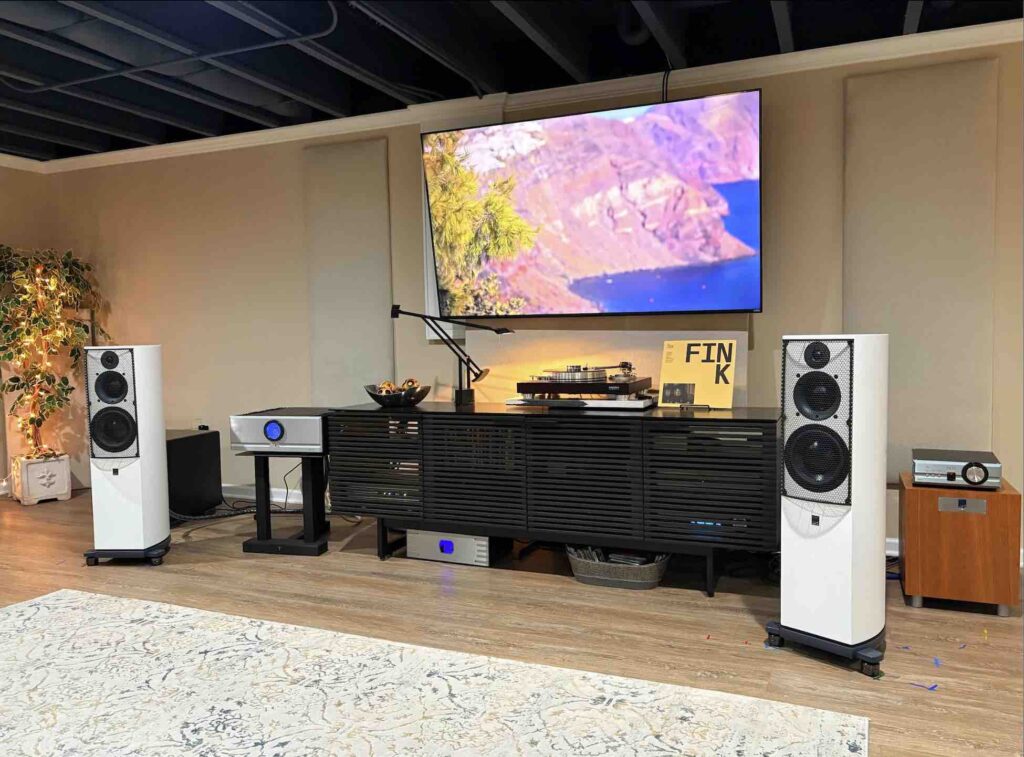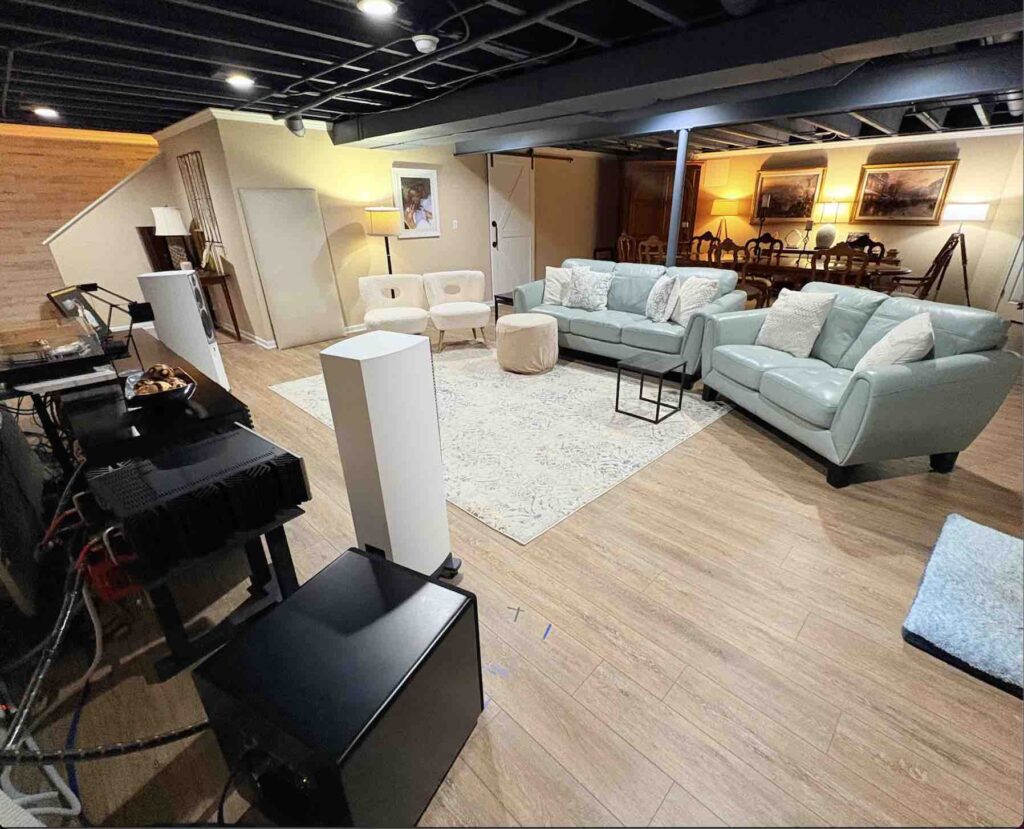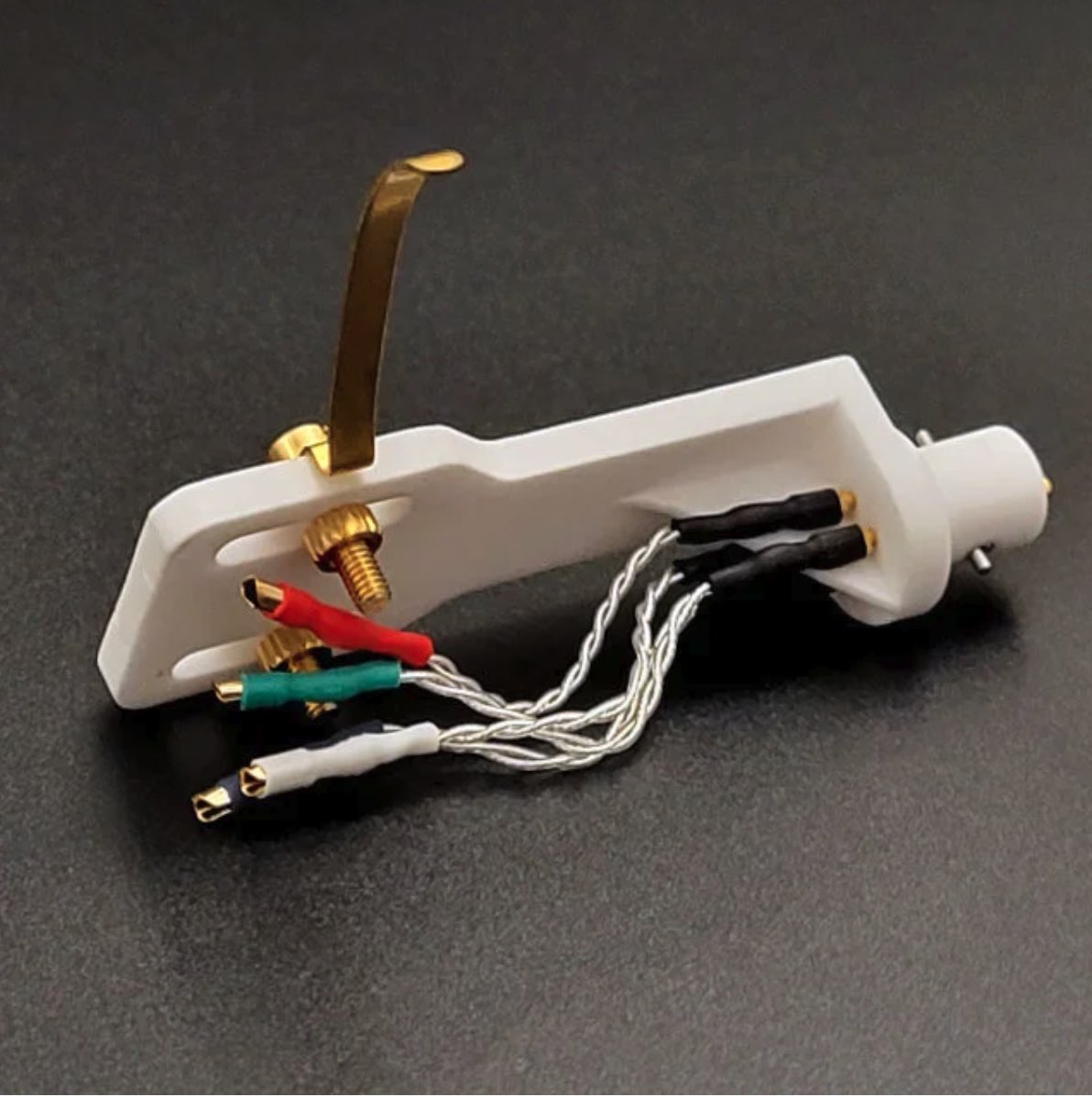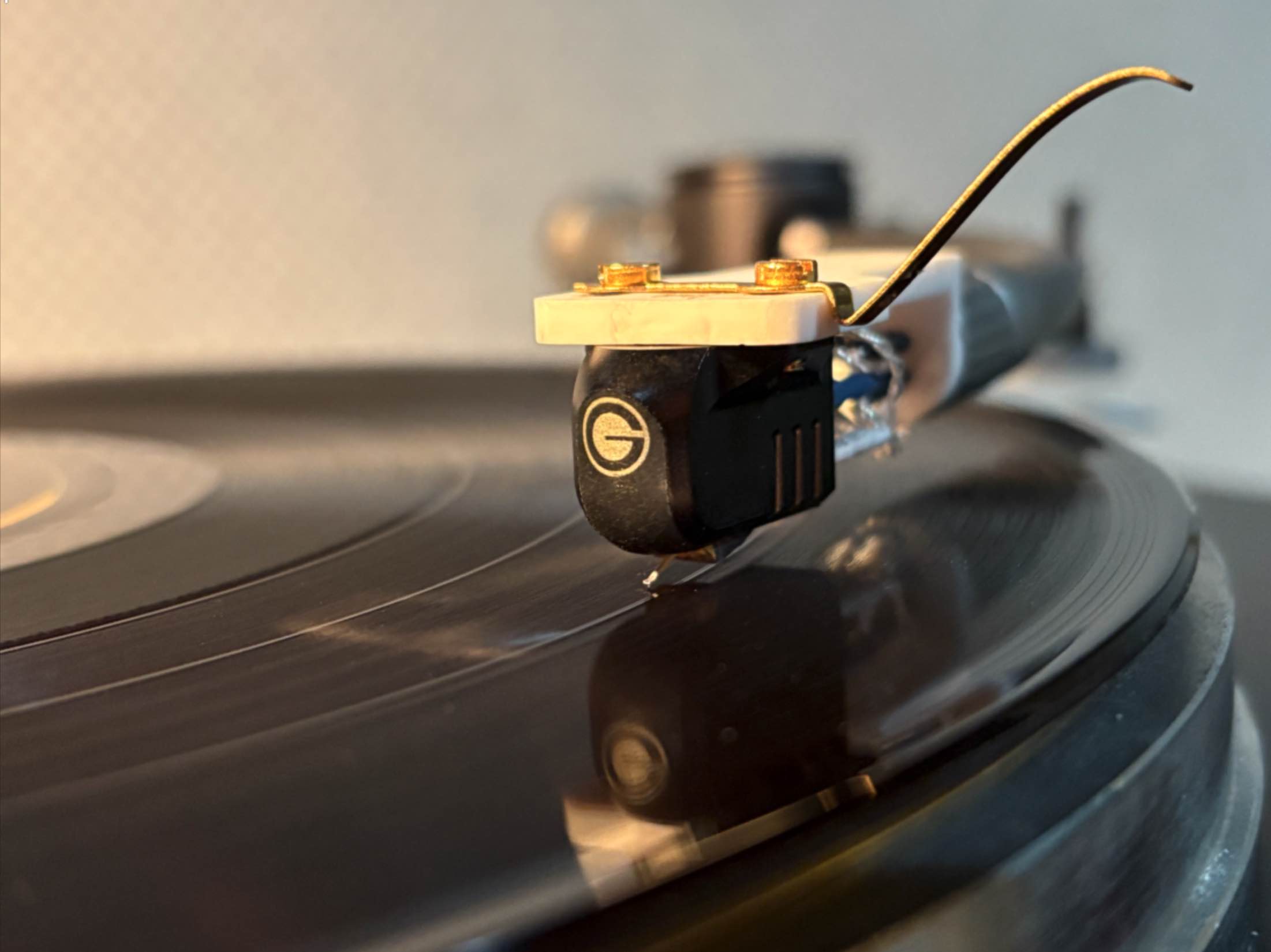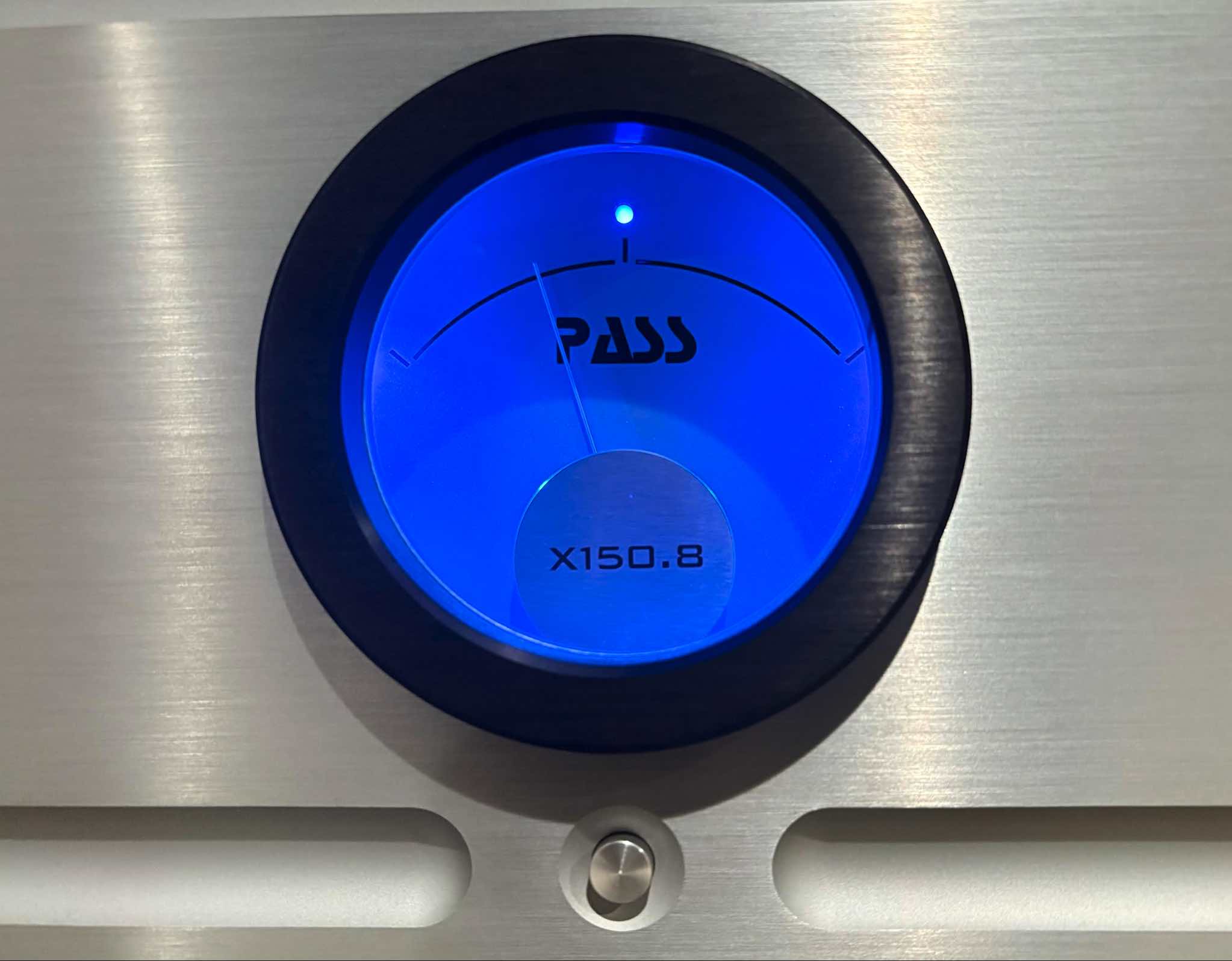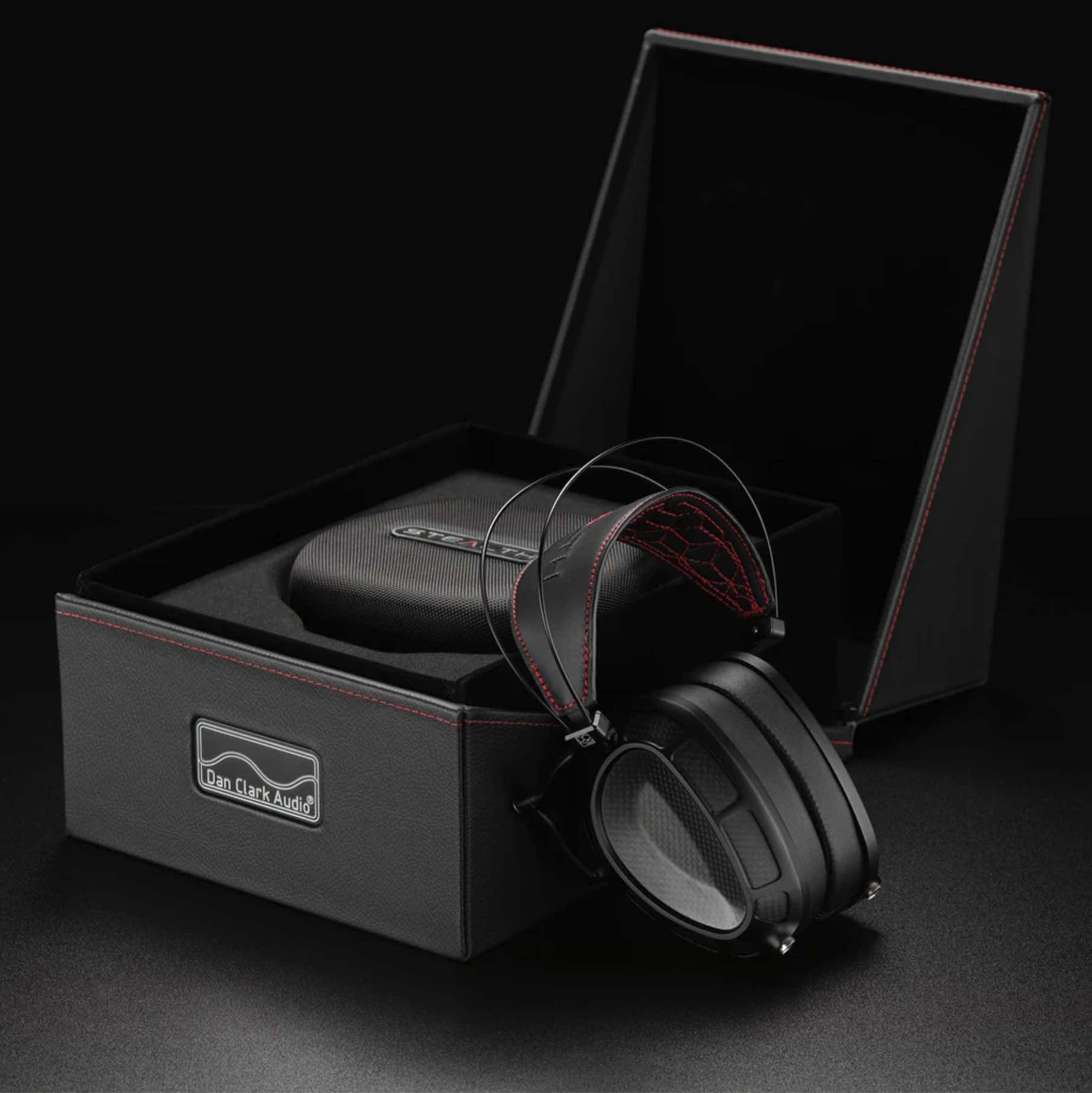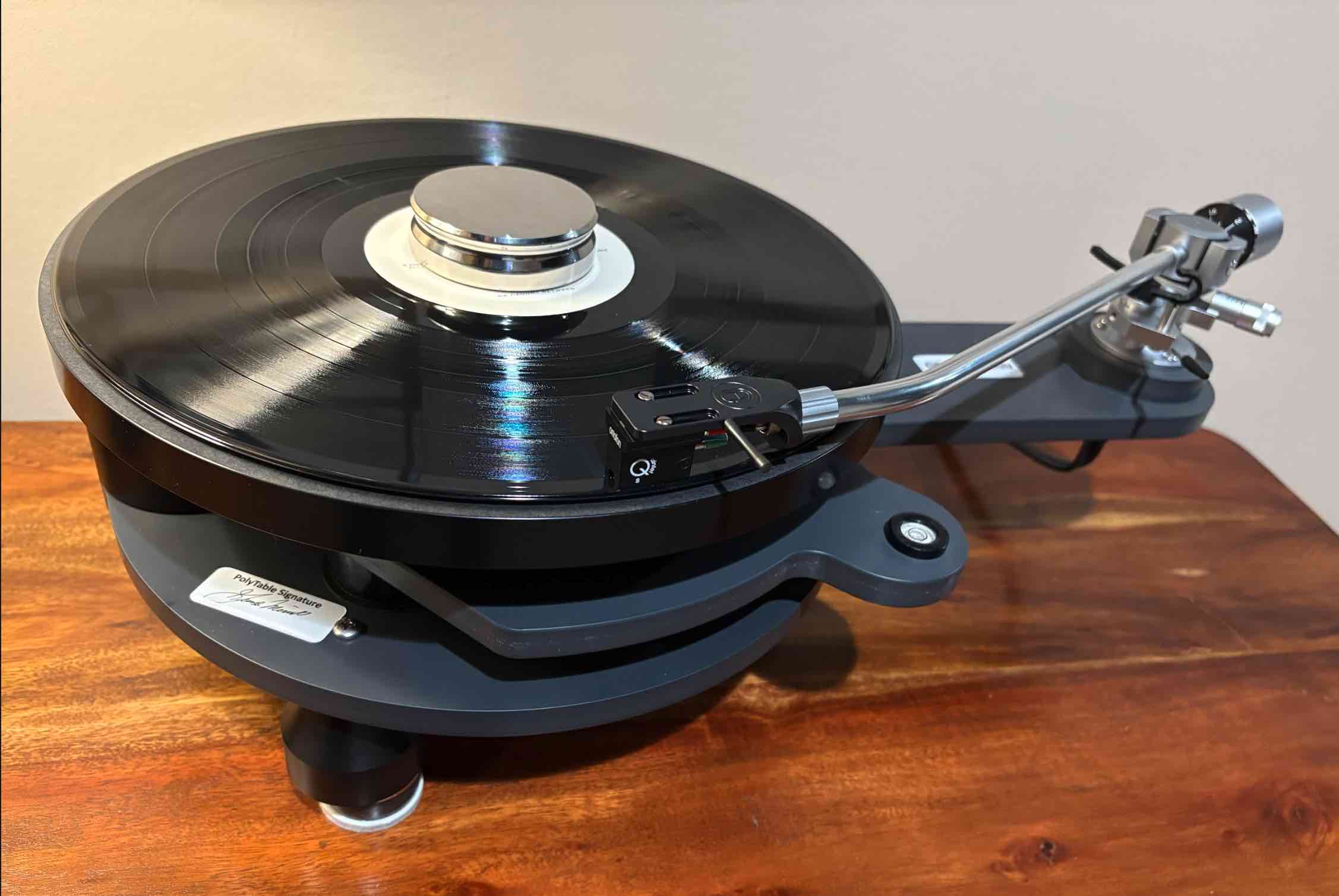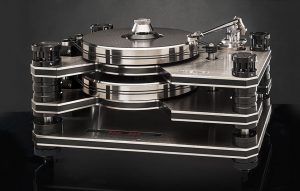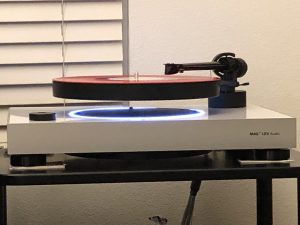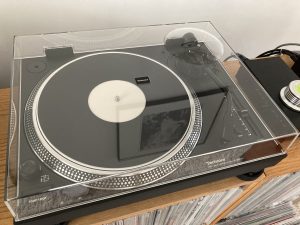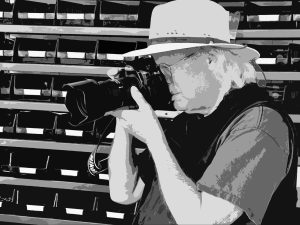If King Tut had a turntable, he'd own a Triangle Art Anubis. The namesake of an Egyptian god, it's appropriately clad in shiny gold and black, infusing your listening room with a sense of luxury and opulence befitting the treasures of King Tutankhamun.
The Anubis is a reference record player for Tom Vu's Triangle Art, a manufacturer based out of Anaheim, CA, noted for their blingy signature turntables and electronics. Like all their tables, it employs a brass, copper, and stainless steel composite plinth for optimized sonic performance.
Lighter on the scale and the wallet than their massive 275 lb. Triangle Art Reference SE deck ($27,990) or their $129,000 flagship, the 850lb. Ultimate Le 2, the $14,990 Anubis employs the same key technologies used in the Reference's motor, platter, and bearing. Like the Reference SE, it comes with a 48 mm thick brass, copper, and stainless steel platter and chassis to mitigate vibrations and resonances. The non-inverted titanium steel bearing with a diamond coating supports the massive platter, facilitating smooth playback with the silent noise floor of a pharaoh's tomb.
A Pharaoh's Blessing and a Small, Correctable Curse
Now, part of the Anubis magic is that it employs magnetic suspension of its arm wand, with the rear metal end sandwiched between magnets above and below; the top magnet grips it while the bottom one stabilizes by maintaining a light tension. However, now and again when employing the lift, the bottom magnet may grab it, which is incorrect; the solution is to simply lift the rear portion of the wand, and with a click, making sure that it is touching the top magnet, instead.
A Heavy Load
That said, you'd better have a very sturdy equipment rack underneath the Anubis; unlike the canine headed god it's named after, it is not lean nor lithe, but a stout and burly 160 lbs.
This point was underscored when my wife, Belle, noticed that despite a pair of weightlifting stands lending support, the top shelf of our Simpli Home Skylar 60" media stand, with its stated capacity of 200lbs, sagged slightly under the burden of the Anubis chassis, tonearm tower, and motor on a wooden isolation slab. It was too much concentrated weight (in all fairness, the preamp and an external DAC share shelf space with the Anubis, with other equipment on shelves below).
Not wanting to ruin our stand, the Anubis and wooden platform were transferred entirely to the weightlifting racks, and all was good. Just inches below, the Skylar's steel and wood structure let out an ominous groan as stored energy released and it sprang back straight.
Specifications
- Material: Brass, stainless steel and copper composite metal plinth with precision CNC machined to prevent vibration.
- Speed Ranges: 33.3 and 45 rpm
- Motor: High torque AC motor with belt drive.
- Bearing: CNC Titanium ball with Diamond coating. Stainless steel shaft to Drive platter.
- Platter: Solid 80mm chrome platter, comprised of a brass, stainless steel and copper composite
- Weight: 160 lbs.
- Dimensions: 12" L x 12" D x 10" H
Word to the Wise
If you've never set up a turntable, the Anubis is probably not the best one to learn on; in that case, hiring a professional is a good idea. However, if you've done it before, it's not terribly difficult.
In addition to white linen gloves, the kit provides a protractor tool and several small Allen wrenches for assembly, a process that requires a healthy dose of patience as, many of the screws are similar in size, thus, you may have to try several of the wrenches to get the right gauge. Moreover, I found that I had to purchase an additional small, five dollar Allen key set that went down to 1/16" to address several smaller screws.
Now, there's very little in terms of printed directions, however, Triangle Art provides a link to an excellent video where Tom Vu walks you through the steps in dialing in the Osiris tonearm (you can view it HERE). After watching the video, there's relatively little guesswork left and, when there are questions, Tom Vu is good at personally troubleshooting and assisting over Skype, Facebook Instant Messaging, and texting platforms. What follows are some cliff notes (see the video for more detail).
Note: For those who choose to employ a professional for setup, simply skip ahead to the section entitled, "A Word on the Cartridge."
Easy Does It!
After uncrating the hefty load, care must be taken to avoid marring the surface where the Anubis's chassis rests, as it comes with three thick, spiked feet and large spike protection discs. Aligning them so the spikes don't mar the surface is trickier than it looks; I gouged my beautiful wooden anti-vibration platform several times when trying to get it right and, later, when making adjustments relative to the tonearm tower and belt drive motor and the spikes slipped off the discs.
Taking Off the Gloves
Moreover, wearing the white linen gloves complicates things. In addition to protecting the shiny metal surfaces from fingerprints, they reduce friction, making gripping the heavy components, such as the platter, much more challenging—and potentially disastrous.
When I lowered the weighty platter onto the plinth, gripping it tightly, the tip of one of my gloves' fingers stretched out and got pinched between them. I had to remove both gloves so I could lift the platter and extract it (I thought for sure the glove would tear). Frankly, I would recommend not wearing gloves while handling the platter and plinth to avoid risking dropping them.
Location, Location, Location
In terms of placement, the tonearm tower should be roughly five inches away to the right and rear of the platter, providing enough room to accommodate the wand, while the motor should be to the rear left with enough space to keep the elastic belt drive taut (roughly a three inch gap should be sufficient).
And a Wand, and a Two...
As we prepare to address the tonearm assembly, it's important to note that 3/4 of the length of the 12-inch tonearm wand is a delicate wooden structure; Mr. Vu cautioned me to not rest the metal protractor on it when setting the tonearm tower placement and stylus alignment, lest I risk breaking it. He said that it's similar in sensitivity and vulnerability to a human hair. Hyperbole aside, I find his insights extremely valuable.
Two screws must be loosened in the tonearm, separating the top half—or tonearm column—from the bottom anchoring portion, which is mounted into the arm board of the tonearm tower with screws. Dropping the top portion back into the bottom, you re-tighten the screws. The cuing lift and arm rest can be adjusted for height on the tonearm, as needed, with a few turns of their respective screws.
Now, there are two counterweights that you slide onto the rear of the wand, then place the tonearm into the tonearm body.
Placing the wand, with its magnetic suspension between magnets above and below, is a snap: it is rotated into place, and with a click, the top magnet grips it while the bottom one stabilizes by maintaining a light tension (note: occasionally, the bottom magnet may grab it, which is incorrect; simply lift the wand and make sure the wand is touching the top magnet, instead). Care must be exercised here, as the tonearm wire comes already connected to the wand on one end, and a short barrel sprouting the RCA cable outs to the phono preamplifier on the other. Plug the barrel into the tonearm, locking it in place with several turns of an Allen wrench.
Motoring On
A power cord plugs into the lower rear of the motor's housing which, in turn, is plugged into a separate Triangle Art Controller unit (which governs the speed of the motor for greater playback consistency and accuracy).
Now, this may seem obvious, but if you are using an isolation platform, make sure that you allow extra play room between the motor and the plinth for proper belt tension before employing the protractor to get the proper adjustments and placement of the tonearm tower and cartridge. In fact, I'd have the belt already linked up before getting the protractor out. Simply stretch the clear elastic drive belt from the motor's pulley around the platter, noting the pulley's settings; the narrower section is for 33 ⅓ RPM, while the wider section is for 45. Press the power button and the belt will automatically align itself (if you're using the Controller, make sure it's turned on before starting the motor or you'll have no power).
The Nitty Gritty
That done, there's the usual mounting of the tonearm's leads to the phono cartridge terminals—red to red, blue to blue, and white to white—which demands a little concentration and time. The screws attaching the cartridge to the Osiris tonearm should remain a little loose to allow for adjustments later. For this review, I use the Ortofon Cadenza Black Moving Coil cartridge, especially after struggling for over five hours to get the tracking force correct.
A Show of Force
Using a digital stylus force gauge for feedback, the tonearm counterweights are adjusted by twisting them one at a time, checking the weight, and adjusting some more in small increments. Getting it to the recommended weight for the cartridge can take time, so patience is required. In the case of the Cadenza Black MC cartridge, the recommended range was 2.0 to 2.5 grams with an ideal weight of 2.3.
Lateral Tracking
Lateral Tracking Adjustment is accessed by loosening a screw on top of the cartridge mount that allows you to rotate it. Balance a thin metal rod (or food pick or other thin, straight object) on top of the mount and turn it until it's horizontal, then tighten the screw.
Getting Vertical by Starting Horizontal
Now Adjusting the VTA (Vertical Tracking Alignment) is another matter; it is achieved by inserting an Allen Wrench into yet another screw on the side of the tonearm mount (hint: you have to look closely for it), loosening it to raise or lower the tonearm column by twisting a rotating knob at its base, then tightening the screw to lock it in place.
As a starting point, the bottom of the cartridge should be parallel to the record's surface, and adjustments made from there, raising or lowering the tonearm level, locking it in place, lowering the stylus, playing and listening, raising and locking it, making minor VTA adjustments, and listening again.
A Word on the Cartridge
For this review, Ortofon gladly shipped out a review sample of their $2729 Cadenza Black Moving Coil Cartridge, a notable step up from their Quintet Black MC Cartridge ($999) that I've used in past reviews. The Cadenza uses "a Nude Shibata stylus with a boron cantilever (with) the effective mass of the stylus/cantilever system...extremely low due to the use of a very thin boron rod," Ortofon.com says, adding that the boron is very stiff and lighter than aluminum, damping high and low frequencies separately. The result is stunning dynamics, neutrality, detail and sound staging.
The Fun Stuff
The inner tech geek sated, it's now time to flip some wax. Right off, it's apparent that the Anubis has a disarming way of simply getting out of the way and letting the music shine through.
For example, the texture and tone, as well as the interplay between Walter Becker's guitar and Donald Fagan's keys in their megahit, "Hey Nineteen" (Gaucho. MCA, 1980) shines through, reminding how good a team they were—and the Anubis delivers it in spades. Fagan's unique signature vocals—and those of his backup singers, Frank Floyd and Zack Sanders—sound resplendent and warm.
Then there's Wes Montgomery's double-jointed thumb serving up his unique, buttery fat tone on his hollow bodied guitar, mesmerizing with his runs and bent notes in "Tequila" (The Best of Wes Montgomery. Verve. 1967), while Grady Tate's high hat, cymbals, snares, and tom drum are rendered in real space in this classic pop jazz hit. The Anubis, for all its shiny and massive presence, disappears as the music takes us on a rapturous journey of song and melody.
The dreamy presentation continues with a cheering crowd that gives way to a synthesizer, electric guitar, tom drums, and crashing cymbals in Tangerine Dream's "Part One" (Ricochet. Virgin Music, 1975). It's an aural elixir, transfixing and timeless, blurring the lines between reality and surrealism.
Then, as if emerging from a time warp, the Anubis rouses with the snap of Butch Trucks' snare, the grit of Gregg Allman's vocals, and the glorious, sassy wine of Duane Allman's guitar channeled into ones living room in "Statesboro Blues" (At Fillmore East. Capricorn Records, 1971).
Fast forwarding to the 80s, the Anubis unpacks a quaint bank of violins, which is quickly overtaken by drums, synthesizers, electronica and Madonna's luscious, rich vocals in "Papa Don't Preach" (True Blue. Sire Records, 1986) with punch, verve, and vitality.
Ditching the club scene for a coat and tie, the Anubis captivates with a holographic presentation of a glimmering Vibraphone hovering front and center, accompanied by a walking bass and Dave Brubeck's comping piano in "Tea for Two" (Early Fantasies. Book of the Month Records, 1980). Brubeck's piano takes over, the ride cymbal lilting faintly in the background, and is rejoined with the vibraphone for a sumptuously satisfying travel back in time.
This is too much fun! Letting the record play into the next song, we are rewarded, lastly, with Dave Brubeck's piano full, rich and in the listening room, as are Dawson's drum kit and Jack Sixes' upright acoustic bass in "Laura." With the Anubis, it's a rich experience.
Concluding Remarks
The Triangle Art Anubis isn't for everyone. As mentioned earlier, if you don't have a robust and heavy duty stand to support it, or, for that matter, if you don't have help and have to transport it up several flights of stairs by yourself, the 180lb mass may be a deal killer. Or, if you or your partner prefer slim, sleek players and have an aversion to bulky, blingy turntables to the point that domestic tranquility may be at risk, it is not for you.
And, as a reference turntable, at just under $15,000, it's not inexpensive. That said, there are plenty of others that cost more and, at this price, you get a lot of the same features and benefits of much costlier models.
And, then there's the delicate tonearm wand. If you're all thumbs and are a little rough on your gear—or if you have children that won't show the utmost care around your equipment—steer clear of the Anubis.
However, if these are not issues for you, then by all means, the Anubis may provide you with untold riches of auditory pleasure worthy of the Egyptian gods. The soundstage, neutrality, incredible detail and musicality are simply amazing.
Bottom line, had I formally reviewed it earlier, it certainly would have made my list for a 2019 Positive Feedback Award. It's just that good.
Note, the Triangle Art Anubis, which is also available in silver and black, will be at this year's AXPONA in Schaumburg, IL this upcoming April.
Anubis Turntable
Retail: $15,000
Triangle Art





















